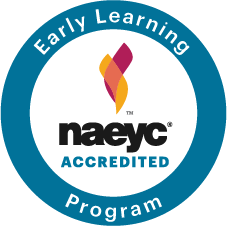On Thursday, March 28th, Head of School Sue Donaghy along with teachers Kelly Krzykowski, Clarissa Moore and Sarah Morris presented on how children learn through projects. Following is an introduction of the session.
What Do Children Need for Their Future?
To be:
• Creative thinkers – who can deal with practical and abstract issues
• Flexible – and able to adjust to an increasingly complex world filled with information, technology and diverse people
• Problem solvers – who will be ready for the challenges and opportunities they will face
• Innovators – able to generate new ideas
(NAEYC : Excerpt from Nurturing Creativity: An Essential Mindset for Young Children’s Learning 2016)
With new technology and an ever expanding, information based economy, nurturing children’s creativity and curiosity while providing a solid foundation in critical thinking, communication, and math is the best way to prepare them for their future.
(Diamandis & Kotler 2012)
At PIFS we recognize this and it is our Mission –
To provide an early childhood educational experience that will ignite a love of learning and inspire children to:
- Be creative and critical thinkers
- Have a positive self-image
- Bravely take risks
- Embrace diversity
- Feel responsible for themselves and their world
- Be good friends
So Why Projects?
“A project is an in-depth investigation of a topic worth learning about.”
(Lillian Katz)
- Research tells us that children learn best in purposefully created engaging learning environments that intrigue children and encourage problem solving, curiosity and creativity
- Children need opportunities to follow their interests, make choices, collaborate with others (strengthening their social and emotional development)
- To expand their thinking and develop new skills, they must have the freedom to make mistakes and be encouraged to learn through them (the majority of innovations, experiments, inventions, writings, and designs happen because of deviations from conventions)
- And to be impactful and retain this interest, they must find meaning in their work
The Process of a Project
Step 1 – Initiated by a teacher or children
Provocation – teacher sparks interest through a display, an interaction, or an activity
Observing and listening to children – teacher recognizes an interest that might launch a study
Can it…
• Build on what children already know?
• Help them make better sense of the world they live in?
• Offer children ideas for dramatic play and other forms of representation?
• Help children and teachers seek resources outside of the school?
• Facilitate communications with parents?
• Integrate literacy, math, and science?
Step 2 – Investigation & Research
• Children and teachers gather information through teacher selected and child-initiated learning experiences.
• Supportive partnerships develop with families and parents.
• Children record and represent their learning using a variety of media, collaborative construction.
• Teachers interact and inspire inquiry and further exploration which raises level of thinking and scaffolds knowledge and skills.
• Teachers observe and document the learning process.
Step 3 – Conclusion
Children summarize their learning in a construction and communication for others – which includes reporting, representation and exhibits.
Do All Projects Go to Conclusion?
No, sometimes what starts off as a great topic for study doesn’t hold the children’s interest. The journey was still valuable.
Are All Children Involved?
To move from an interesting topic to a full project, there must be substantial interest in the classroom. That doesn’t mean that all children will be interested and children tend to float in and out of the project.
Is that all that is going on in the classroom at the time?
No, although a project can be quite encompassing, other learning opportunities coexist.


